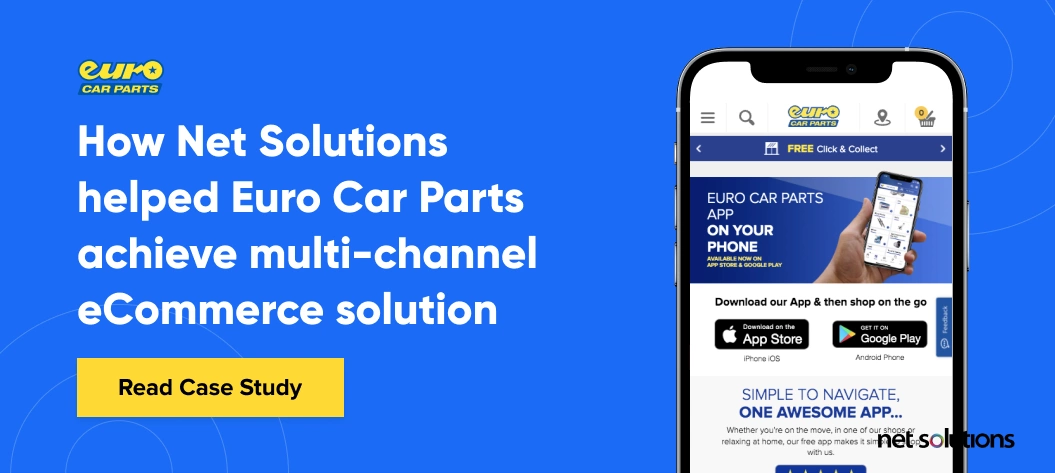Explore the nuances of B2B and B2C eCommerce and discover how to optimize your online presence for your target audience. Our expert guide delves into the key differences between B2B and B2C eCommerce websites, covering topics such as target audience, product offerings, pricing, and more. Whether you’re looking to start your eCommerce journey or take your existing business to the next level, this guide offers valuable insights and actionable advice for B2B or B2C success.
Do you run (or are you thinking about starting) an eCommerce business? If so, your website is your most valuable marketing tool. Before you focus on any other form of advertising, you need to make sure your website is designed to convert.
Your approach to optimizing conversions will vary considerably based on your target audience. Are you running a Business-to-Business (B2B) eCommerce website? Or are you running a Business-to-Consumer (B2C) eCommerce website?
What follows are 9 important differences between B2B and B2C eCommerce websites—differences rooted in the business models. When you design an eCommerce website tailored to your business model and provide the right kind of ecommerce solutions, it will almost certainly impact your sales.
What is B2B and B2C eCommerce?
In the B2B (Business-to-Business) eCommerce model, a company (often a manufacturer or a wholesaler) sells to other businesses (often a retailer). The retailer, in turn, sells those products to end-consumers, adopting a B2C (Business-to-Consumer) model.
The real difference between B2C and B2B
B2C = selling to people
B2B = selling to people that work at a company.
Still selling to people.
— Dave Gerhardt (@davegerhardt) Dave Genrhardt
Of course, it’s not always that straightforward. A small manufacturer might adopt a direct-to-consumer model and sell their products to individuals, adopting a B2C model even though they’re the source of the goods. Picture a craftsperson who makes beeswax candles from their home and sells them to individual consumers. Likewise, a large retailer might sell their goods to businesses in bulk, like a furniture retailer selling office chairs to big companies by the hundreds. This would be a B2B model.
Many businesses have both a B2B and a B2C model. Others adopt a B2B2B or a B2B2C model, where the supply chain passes through more than one vendor before reaching its final destination.
Confused now? Don’t worry; it’s not too complicated. Here are some real-world examples of each model. What’s important to understand is your business model should shape your website’s design and structure, along with the marketing copy you use to reach your audience(s).
B2B eCommerce example: Symantec
Symantec sells anti-virus software that Apple uses to scan its internal infrastructure and protect its business data.
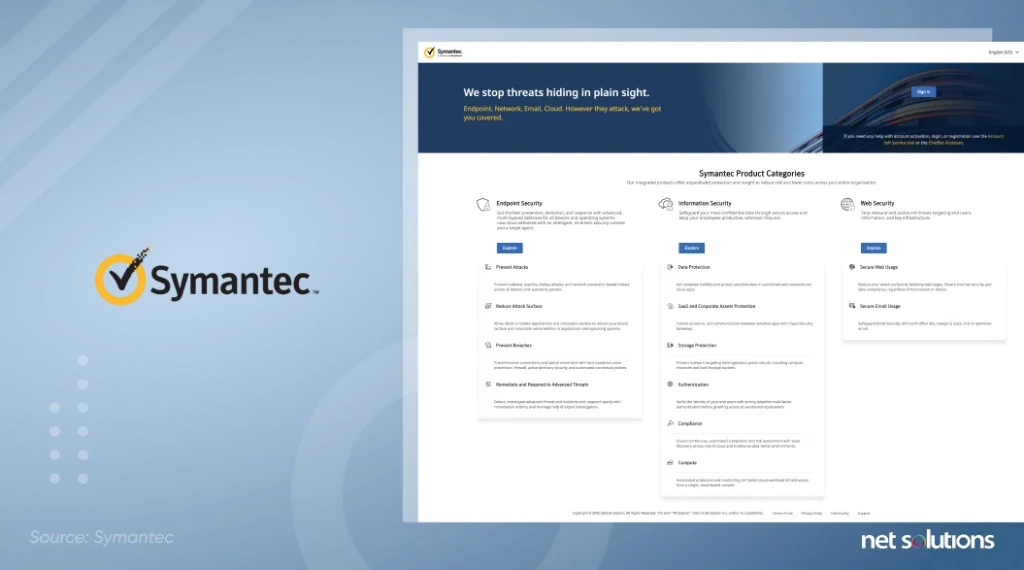
B2C eCommerce example: Walmart
Walmart buys from wholesalers and manufacturers around the world, and they turn around and sell products to consumers (both in their retail shops and online, through their website).
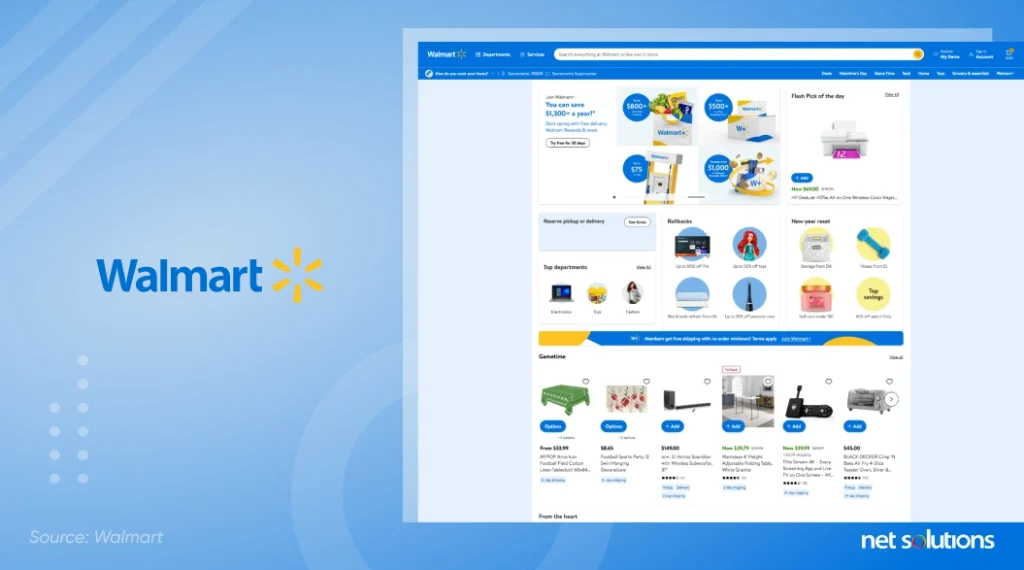
B2B and B2C eCommerce example: IBM
You’re undoubtedly familiar with IBM’s B2C model since they market their personal computers to end consumers. However, IBM has many teams dedicated to corporate sales, negotiating bulk purchases for computer equipment. That’s how IBM began (hence the name, International Business Machine). The so-called “Personal Computer,” or PC, was an afterthought for IBM.
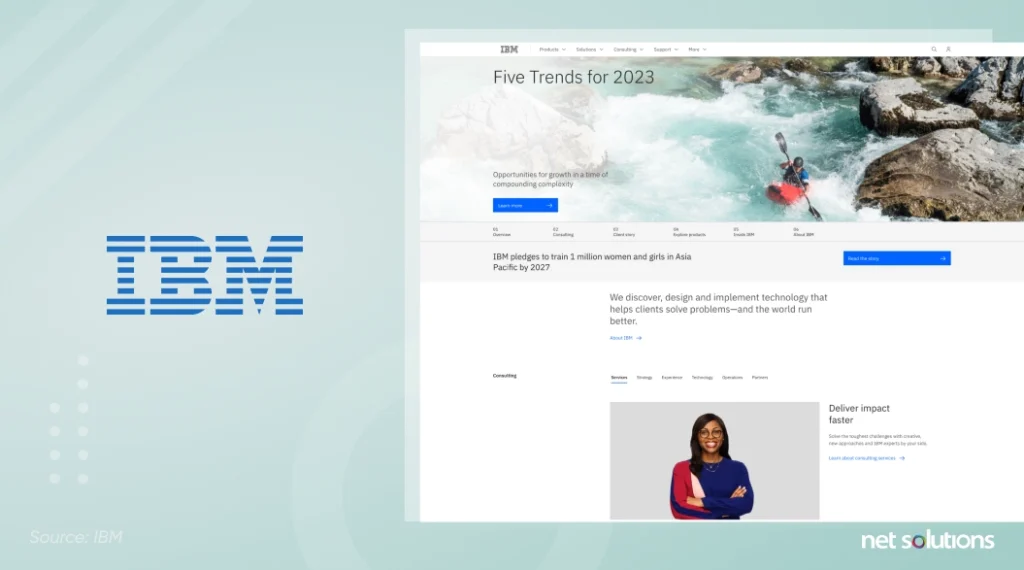
B2B2B example: Apple
Here’s where things get interesting. Apple sells iPhones to AT&T (that’s the B2B component). AT&T then resells those phones to businesses that distribute iPhones to all employees, bundled with an AT&T corporate service contract (another B2B transaction).
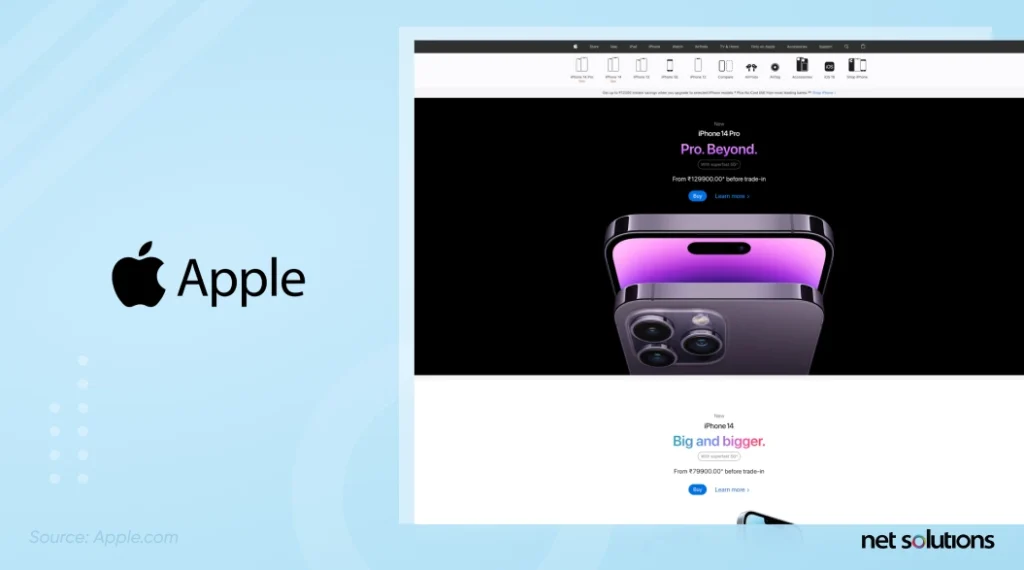
B2B2C example: Alibaba
Alibaba is an online wholesaler famous for selling products to online retailers (B2B), who in turn sell those products to end consumers (B2C). While many eCommerce retailers don’t have their branding and rely on drop-shipping (which isn’t an accurate B2B2C model), some do have their branding. They white label these products, such as stainless steel water bottles, so the eCommerce company can make the brand their own (with their packaging, labels, etc.). This is a B2B2C model.
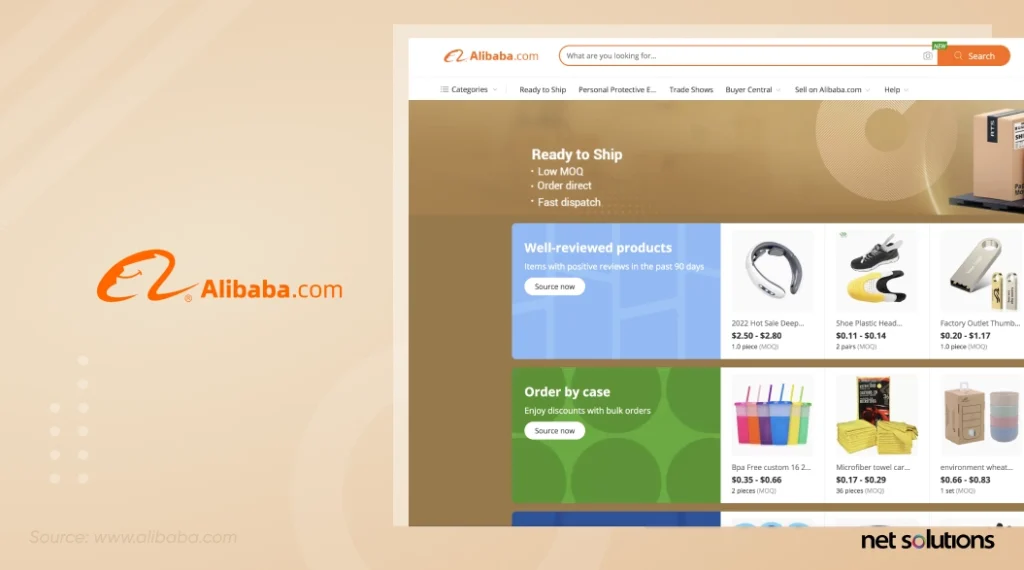
Why does any of this matter?
These different labels matter because, as we’ll soon see, how you market your products will vary significantly based on your business model.
Sure, there’s a cross-over in each model, but think about how Apple might market its products to AT&T differently. Rather than thinking about how the end-user (Steve, the Account Manager) feels about his company-assigned iPhone’s latest features, the AT&T sales rep cares about their clients’ business case for purchasing iPhones and AT&T contracts in bulk. In turn, if Apple wants to sell to AT&T, they’ve got to think about the AT&T buyer’s needs—and how they can help AT&T close high-value business sales using Apple products.
Ultimately, Apple will take a different approach toward reaching their B2B, B2C, B2B2C, and B2B2B customers.
B2C eCommerce in Action: 2XU
2XU is an Australian sportswear retailer that expanded to the U.S., Europe, New Zealand, and Hong Kong after successfully dominating the domestic market.
To aid their international expansion, 2XU turned to Net Solutions to create a comprehensive eCommerce solution.
Read the case study to learn more.
The current state of B2B and B2C eCommerce
Covid-19 substantially changed the Digital Commerce world, with brick-and-mortar shops entering the eCommerce market in droves during the lockdowns.
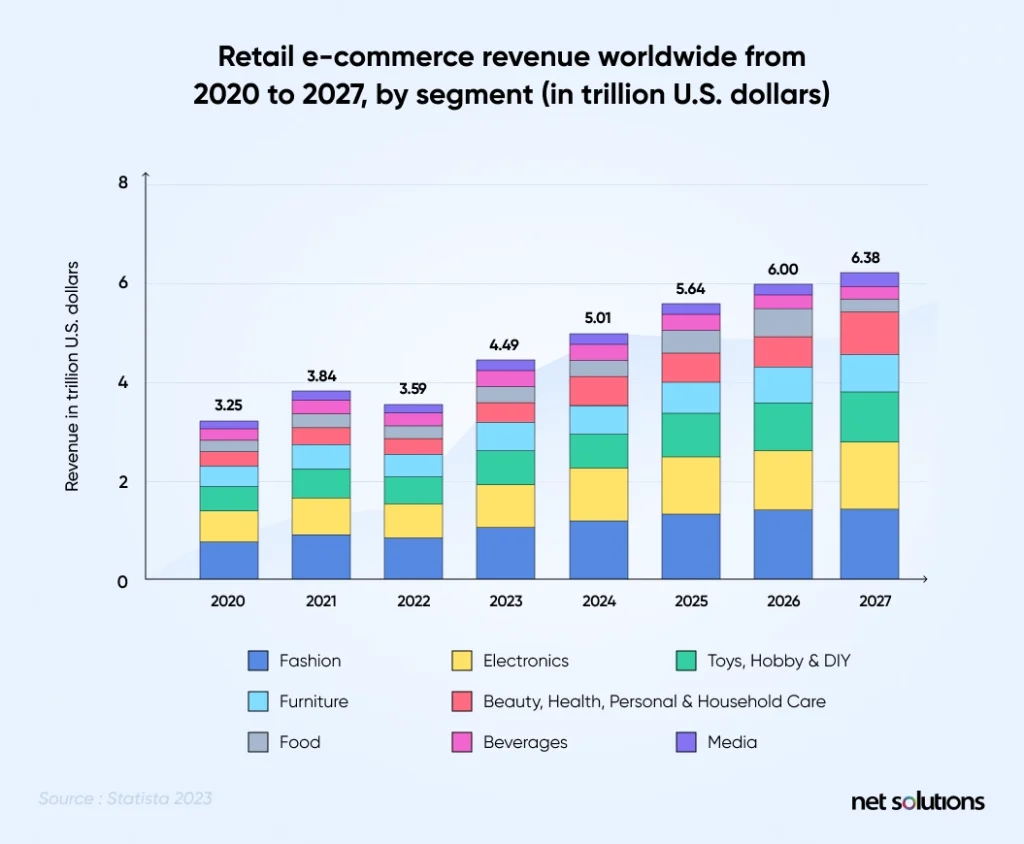
Both B2B eCommerce and B2C eCommerce are poised for growth. According to MarketWatch, the global B2B eCommerce market is expected to grow from USD 7.6 billion to $13.6 billion by 2027, with an annual growth rate of 8.5%. Meanwhile, the B2C eCommerce market is expected to grow annually at 9.5% over the next ten years, and it’s currently valued at $9.6 trillion.
70 percent of B2B decision-makers say they are open to making new, fully self-serve, or remote purchases in excess of $50,000, and 27 percent would spend more than $500,000.
— McKinsey
Primary attributes of B2B and B2C business models
Okay, so what are the differences between each model?
B2B business models:
- Serve fewer buyers
- Handle high-value, low-volume sales
- Have negotiable price points
- Feature longer sales cycles since so much money is on the line
- Focus on long-term buyer-seller relationships
B2B eCommerce in Action: GWA Group
A leading building fixture supplier for more than 30 years, GWA owns and oversees a wide range of popular brands, including Caroma, Methven, Dorf, and Clark. The company supplies retailers, who in turn resell these products to end-consumers.
Net Solutions helped GWA Group modernize their tech stack to streamline their B2B eCommerce efforts.
Read the case study to learn more.
B2C business models:
- Serve far more buyers
- Deal in low-value, high-volume sales
- Prices are almost never negotiable, but coupons are often available
- Rapid sales cycle, especially for cheaper goods
Another way to put it — B2B customers purchase to improve the business, and B2C customers purchase to for daily needs and desires or to improve their lives, or shop impulsively.
The difference between B2B and B2C websites
The differences between B2B and B2C eCommerce websites are
often subtle, but valid nonetheless.
A website is the first point of contact for buyers. It
should be designed so the buyer can understand the business model. Here are 9 differences
between B2B and B2C websites.
1. Product-supporting content
A product-supporting content describes anything that helps
buyers (business reps or consumers) decide.
a. Product supporting content in B2B
While B2B sales often include a lot of handholding, there’s
been a recent shift toward enabling buyers to learn about products independently. This makes
it essential to add all the necessary resources and information upfront so that the
professional buyer can learn as much as possible.
- Comprehensive buying guides
- In-depth product videos
- Articles and blog posts that go deep (like this one)
- Easy access to a sales rep when the buyer needs one
- Case studies outlining customer success stories (view our case studies to see how they
can help buyers make decisions)
b. Product supporting content in B2C
B2C customers are individual buyers, and their decision does
not typically depend on or affect others too much. They have less complicated considerations
when looking for a product online. For instance, if a shopper is looking for a “Party
Dress,” they will look at its reviews, color, price, and whether the dress complements their
style.
B2C websites include:
- Clear, high-resolution images
- Discounting
- Reviews and ratings
- Social Proof in the form of customer testimonials and review videos
- Product features and highlights
B2B2C
eCommerce in Action: Euro Cart Parts
Euro Car Parts is a leading auto parts dealer that sells
car parts to both mechanics as well as end-consumers. They provide more than 15,000
vehicle parts, for all major brands, to buyers across mainland Europe and the United
Kingdom.
Net Solutions designed and built a powerful, multi-channel eCommerce experience for Euro Car
Parts that helped their business thrive.
2. Tailored homepages
The homepage isn’t always the first page a buyer sees when they reach your website, especially for eCommerce companies. Often they bypass the home page and end up on a particular product page based on their Google search. They’ll often check out your homepage to see whether you’re trustworthy. When they do that, your brand needs to align with their expectations.
a. B2B homepage:
A B2B homepage usually follows a minimalistic design with no clutter.
B2B websites include:
- Simple, straightforward design
- Highly informative content (since B2B buyers dig deep)
- Images of the main product/products in the hero section
- Quick order systems for buyers who know the “product name” or SKU
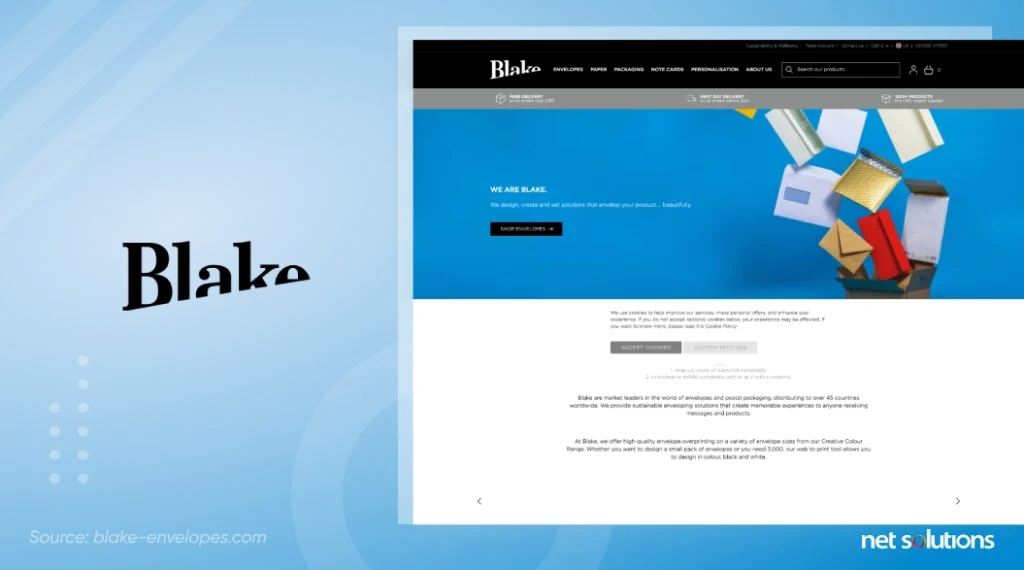
b. B2C Homepage:
A B2C homepage tends to be more flashy. Discounts, special offers, and sales take center stage, pushing the buyer to convert.
B2C websites include:
- Sales, discounts, and offers in the form of carousels
- Catchy and creative headlines
- A vibrant, flashy homepage
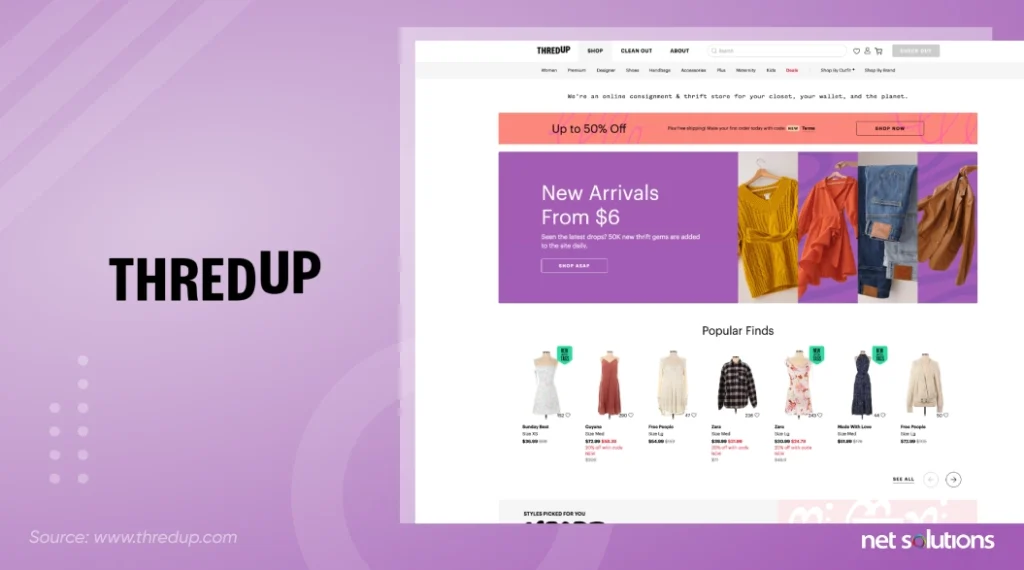
3. Call-to-Action (CTA)
The Call-to-Action (CTA) is where you tell the buyer to take the next step. Usually, it’s a button with text like “Buy Now” or “Book a Demo.”
The CTA on B2B eCommerce websites is usually more to the point, while B2C website CTAs can be more creative. It’s best to A/B test different CTAs to see what gets the highest conversion rate.
a. B2B Call-to-Action example
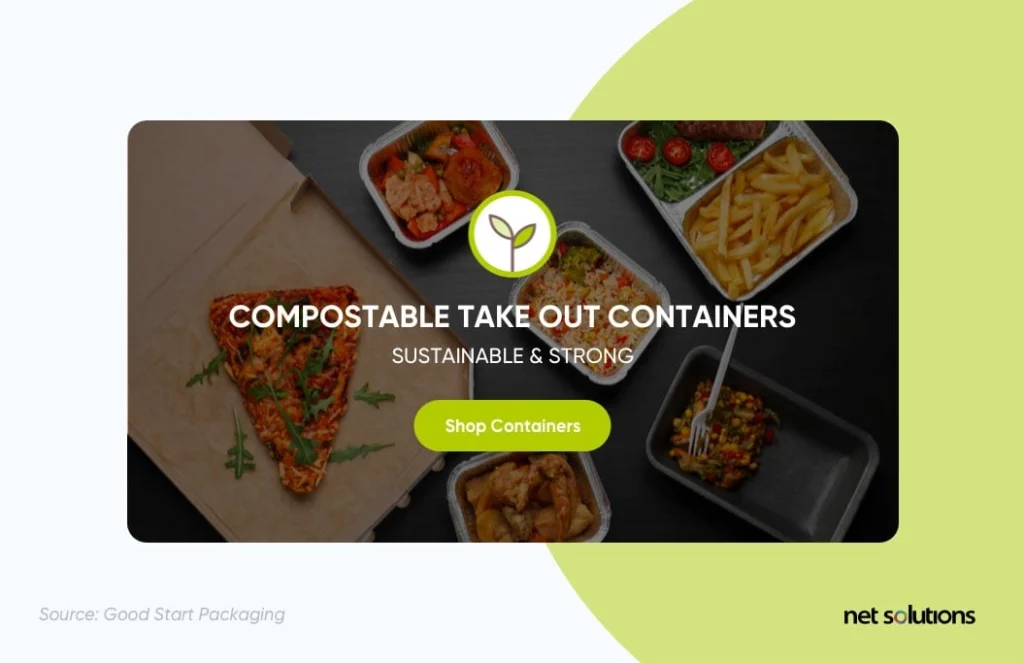
b. B2C Call-to-Action example:
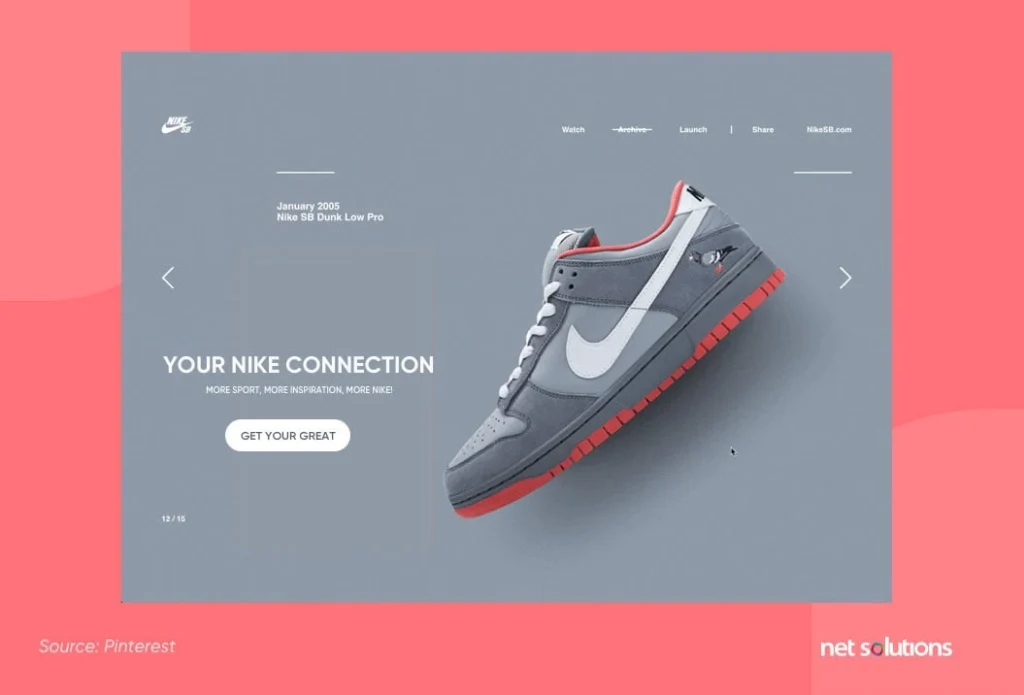
4. Level of customer support
Customer support is essential in both B2B and B2C business setups. It’s as essential, in fact, as a sales rep who greets you at a brick-and-mortar store and offers to help.
a. B2B customer support level
Though B2B sellers rely more on the self-service model, support is still required, especially with new prospects and large orders.
B2B websites include:
- Active customer support across the checkout process
- Live chats and video chats to answer business-oriented FAQs
- After-sale customer care to handle reorders and concerns
b. B2C customer support level
The B2C customer makes quicker decisions since less money is at stake (and nobody’s job is on the line). Customer service is essential for both B2B and B2C businesses. Still, inquiries are limited for the latter, and companies usually try to solve them in minutes rather than hours, days, or weeks.
B2C websites include:
- 24/7 customer support to answer common questions
- A post-sales system that handles returns/complaints/exchanges
- Availability of self-serve bots as a first-line of defense, answering simple questions and reducing customer service costs
5. The checkout process
The last step of the customer journey is the checkout process, where the difference between B2B and B2C is often clear.
a. B2B checkout process
For B2B websites, the process should be a mix of automated, pre-programmed checkout steps coupled with live human assistance available at a moment’s notice. This is key since there’s usually a lot at stake with B2B sales.
B2B eCommerce websites include:
- Human interaction: Product demos, phone calls, and video chats that are an active part of the checkout process
- Payment options such as pay on credit, credit cards, ACH payments, and checks
- A one-click reordering system for repeat orders
b. B2C checkout process
In a B2C business setup, the steps to completing a purchase are minimal. The customer adds the product to the cart, applies discount coupons, validates the delivery address, makes the payment, and receives an acknowledgment that the order went through.
B2C eCommerce websites often include:
- Ability to add more products from a wishlist
- Nudges along the way to avoid abandoned shopping carts
- Payment options availability (e.g., credit cards, debit cards, e-wallets, CODs)
- Ability to add coupons and referral codes
6. Pricing model
B2C pricing is almost always consistent, aside from coupons or special offers. B2B businesses, on the other hand, have variable pricing models, where prices drop based on purchase size. This leads to different best practices regarding website design and copy.
a. B2B pricing
B2B websites often don’t show their pricing up front on the page since prices are often negotiable. Once buyers log into their accounts, they typically have access to their pricing model.
- Customized pricing for loyal customers
- “Request a Quote” Call-to-Action
- An automated pricing calculator to instantly show price changes based on order size
b. B2C pricing
Most of the time, pricing customization in the B2C pricing model comes in the form of discounts, such as coupons, sales, and special offers.
- Upfront pricing
- Transparency and consistent pricing (aside from discounts)
- Fields to enter coupon codes on checkout pages
7. Minimum/Maximum order quantity
Minimum/maximum quantity defines the quantity size of an item when placing an order. B2B allows bulk purchases, whereas a B2C customer can add limited quantities (usually specified by the seller) of the same item.
a. B2B minimum order quantity
A B2B eCommerce business focuses on the Minimum Order Quantity (MOQ) parameter, i.e., the website needs to define the minimum threshold for a B2B purchase.
For instance, Alibaba mentions the MOQ parameter and every product in the search results category.
- Set a parameter for “minimum order quantity” per product
- Include the “minimum order amount” parameter required to complete an order
- Set “quantity in multiples” requirement for products sold in packages
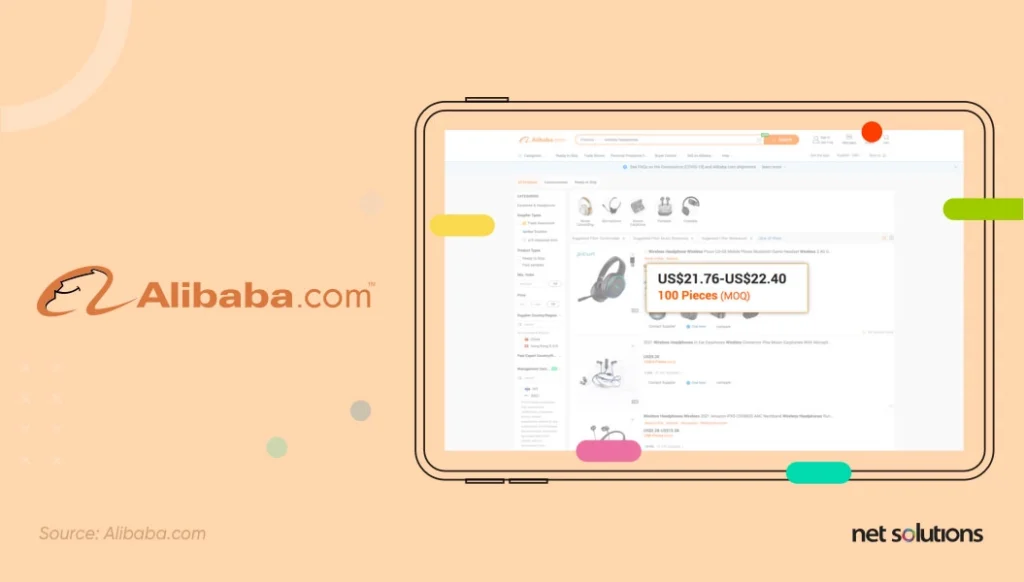
b. B2C maximum order quantity
For a B2C transaction, defining the maximum quantity threshold for placing an order is essential. As soon as the order exceeds a set value, an alert message states that the order quantity has been exceeded.
For instance, Amazon supports a consistent drop-down menu that defines the maximum quantity for an item.
B2C websites:
- Set a parameter for “maximum order quantity” per product
- Generate an alert message once the order quantity exceeds the set quantity
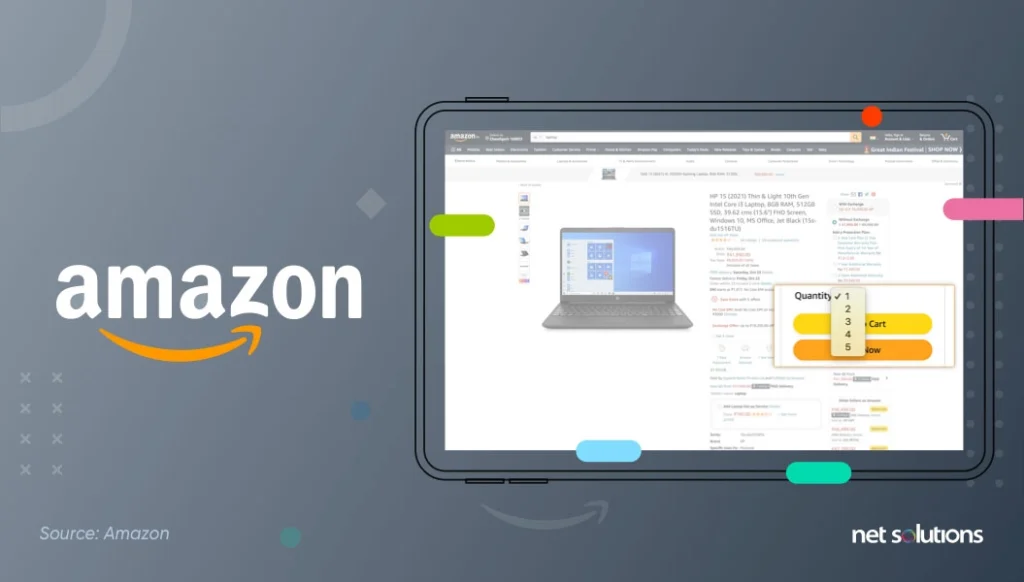
8. Payment options
A B2B business tends to have specialized payment methods, while B2C businesses use the payment methods we’re all familiar with (credit cards, PayPal, etc.).
a. B2B payment methods:
- Pay on Credit: The B2B eCommerce business allows customers to pay later, which is often managed by a third party. A credit amount is allocated based on the business’s credit rating and past payment history.
- Paper Checks: A simple, traditional method where a physical check is sent to the B2B eCommerce business, which they can deposit in their bank account.
- Credit cards: B2B companies sometimes receive payment with bank-issued credit cards.
- ACH Payments: This method allows for automated payments, where the money is directly transferred from one account to another.
b. B2C payment methods:
- Credit cards: Easily the most common payment method for online retailers.
- Debit cards: Paying instantly through personal bank accounts.
- Mobile Wallets: This is an advanced payment method, where the payments are transferred from one account to another using mobile payment apps.
- COD (Cash on Delivery): This involves paying in cash once the order is received.
- Buy Now, Pay Later (BNPL): This involves buying now and paying the full balance later, within a predetermined timeline. In this method, the amount is split between installments, which may or may not include interest fees.
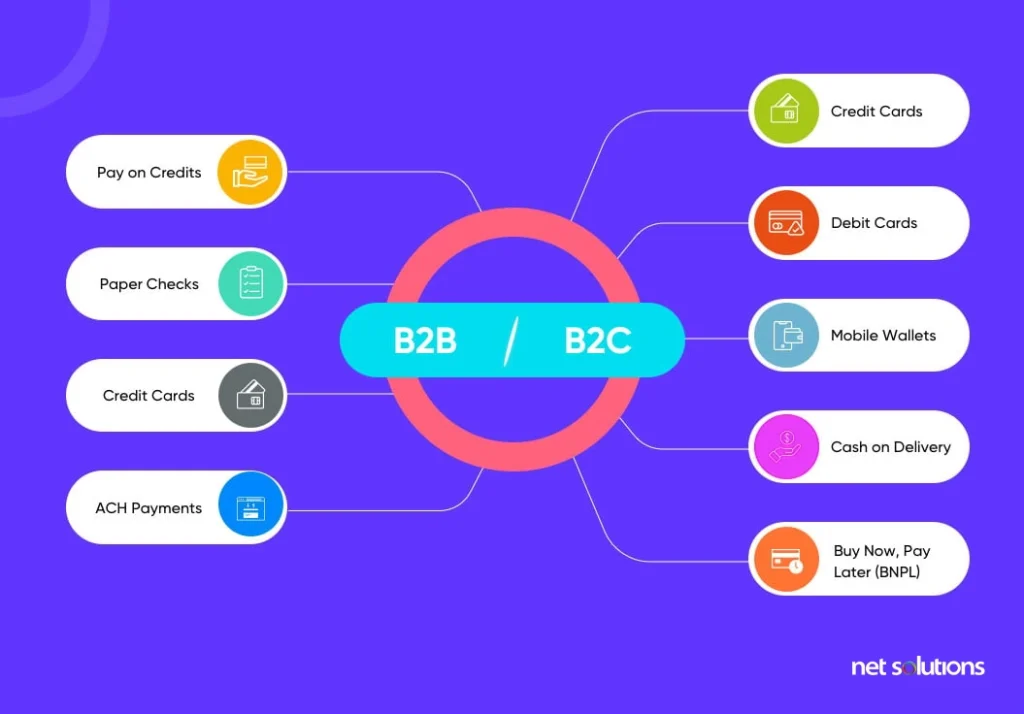
9. Target audience
B2B eCommerce websites typically target other businesses and organizations as customers, while B2C websites target individual consumers.
a. B2B target audience:
- B2B eCommerce websites target other businesses and organizations as customers. These businesses may be wholesalers, manufacturers, or other companies that need to purchase products or services to run their own operations.
- B2B eCommerce websites often require a login or account creation to access pricing and place orders. They typically have a smaller customer base but with higher order values and a greater likelihood of repeat business.
- B2B eCommerce websites are often more complex and require more specialized features such as credit terms, volume discounts, and integrations with other business systems. They may also have strict security and compliance requirements as they handle sensitive business information such as contracts and pricing.
- B2B eCommerce often requires a sales team for customer acquisition and account management.
b. B2C target audience:
- B2C eCommerce websites target individual consumers. These websites allow for anonymous browsing and purchasing.
- B2C websites have a larger customer base but with lower order values. They are generally simpler and focus on ease of use and a visually appealing design.
- B2C eCommerce relies on marketing and advertising to reach and attract customers. The buying process for B2C is usually simpler and faster as it involves a single decision maker and a shorter sales cycle than B2B.
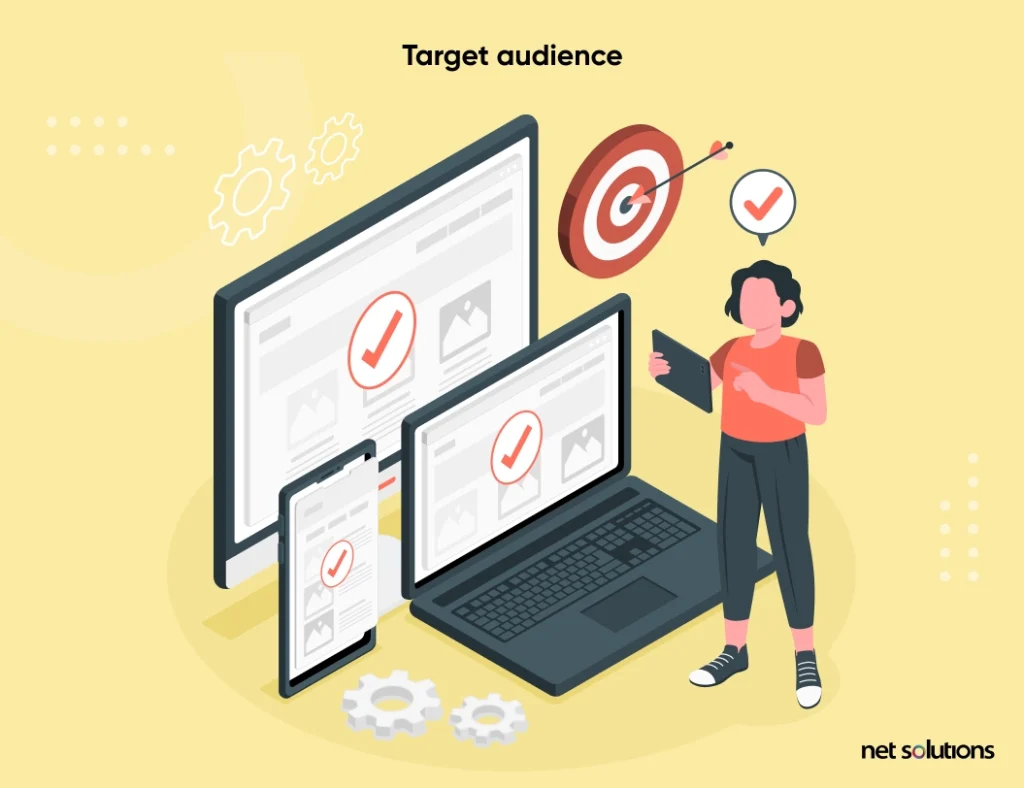
10. Shipping options
Shipping options define the shipping method and delivery speed. B2B and B2C businesses provide different options.
a. B2B shipping options:
The order size for B2B is higher, which makes one-day delivery unfeasible.
- LTL (Less than Truckload) Freight Carrier
- Warehouse Pickup
- Standard Delivery
b. B2C shipping methods:
The order size is small, which makes the order eligible for standard and commonly available shipping methods.
- One-day delivery
- In-Store Pickup
- Same-day delivery
- Free Shipping
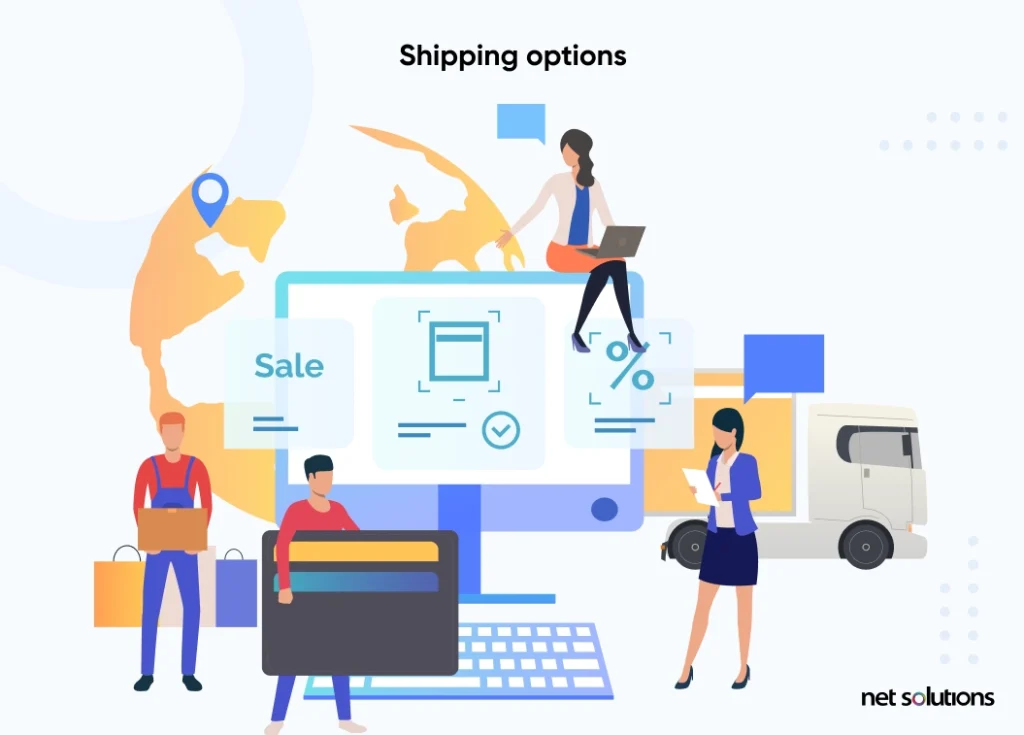
11. Product offering
a. B2B product offering:
- B2B eCommerce websites typically offer a wide range of products and services geared towards other businesses. These include raw materials, manufacturing equipment, office supplies, and business services such as consulting or software solutions.
- B2B eCommerce websites may also offer customized or bulk products and services.
b. B2C product offering:
- B2C eCommerce websites generally offer a broader range of products and services intended for individual consumers. These include consumer goods such as clothing, electronics, home goods, and services such as travel and entertainment.
- B2C eCommerce websites often offer a wider range of products and services, emphasizing consumer convenience and personalization.
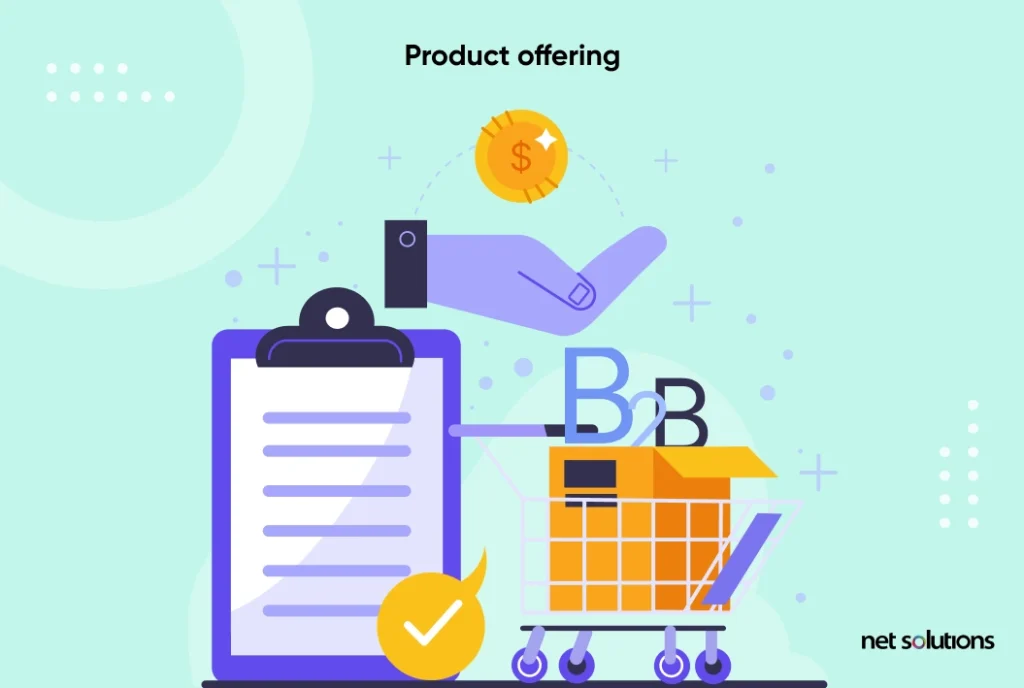
12. Marketing and advertising
B2B methods:
- B2B eCommerce websites often use a variety of marketing and advertising strategies to reach other businesses and organizations. These include targeted digital advertising, email marketing, and social media campaigns.
- B2B eCommerce websites may also rely heavily on content marketing, such as creating informative blog posts and whitepapers and participating in industry events and tradeshows.
- B2B eCommerce websites focus on building relationships with potential customers through networking and personal interactions.
B2C methods:
- B2C eCommerce websites use marketing and advertising strategies geared towards individual consumers. These include social media advertising, Google and other search engine advertising, influencer marketing, and email marketing.
- B2C eCommerce websites use retargeting and remarketing techniques to reach potential customers who have shown interest in their products or services.
- B2C eCommerce websites often focus on creating a visually appealing and user-friendly website and providing a seamless customer experience throughout the purchase journey.
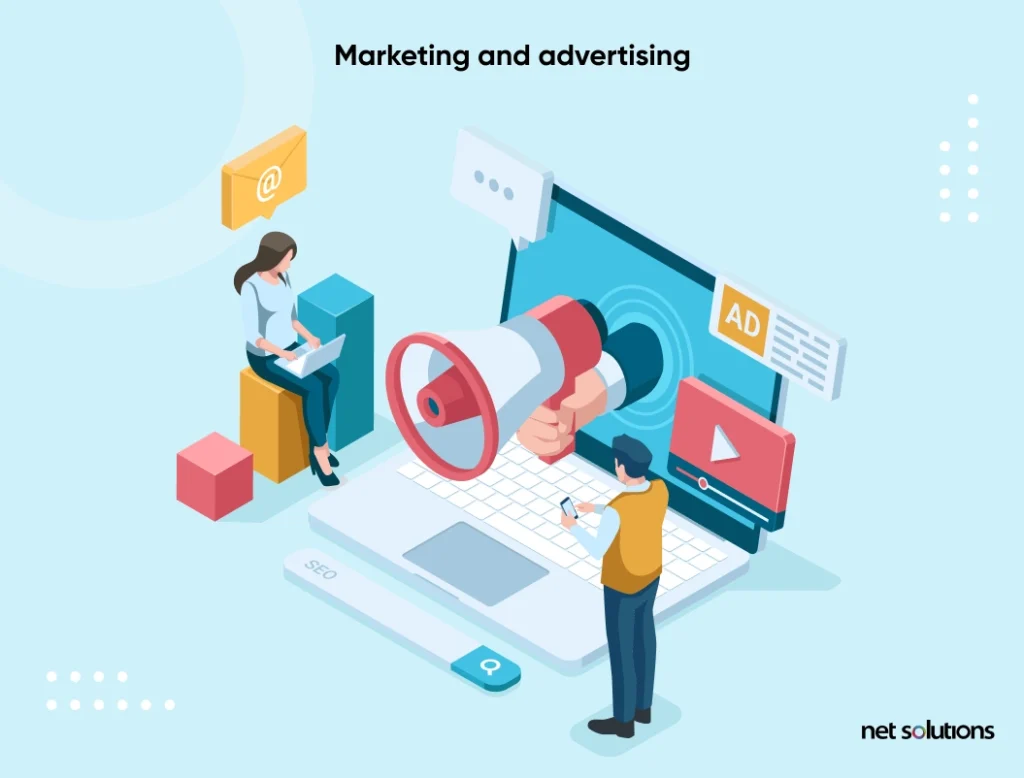
B2B drawing marketing strategy from B2C methods
B2B (business-to-business) marketing strategy is now known to draw inspiration and techniques from B2C (business-to-consumer) methods to improve their marketing efforts. This can include tactics such as omnichannel experiences, selling with a mobile-first strategy, Personalized experience, storytelling, and emotional appeals, which are commonly used in B2C marketing.
Additionally, B2B marketers may adopt B2C-style digital marketing techniques such as social media marketing, content marketing, and email marketing. The goal is to create a more effective and engaging marketing strategy that resonates with the business decision-makers they are targeting.
13. Website design and functionality
a. B2B methods:
- B2B eCommerce websites often have a more professional and straightforward design compared to B2C websites with a minimalistic and functional design that prioritizes the user experience for businesses.
- B2B eCommerce websites often have more complex navigation and require specialized features such as account management, order tracking, and inventory management. They have detailed product information, technical specifications, and case studies to support the decision-making process of other businesses.
- B2B eCommerce websites often have a more robust back-end system that can handle bulk orders and multiple pricing options.
b. B2C methods:
- B2C eCommerce websites often have a more visually appealing design that focuses on creating an immersive and engaging customer experience.
- B2C eCommerce websites often emphasize images, videos, and interactive elements to showcase their products and services.
- B2C eCommerce websites often have more simple and user-friendly navigation, with features such as wishlists, reviews, and ratings, to facilitate the decision-making process of the individual customers.
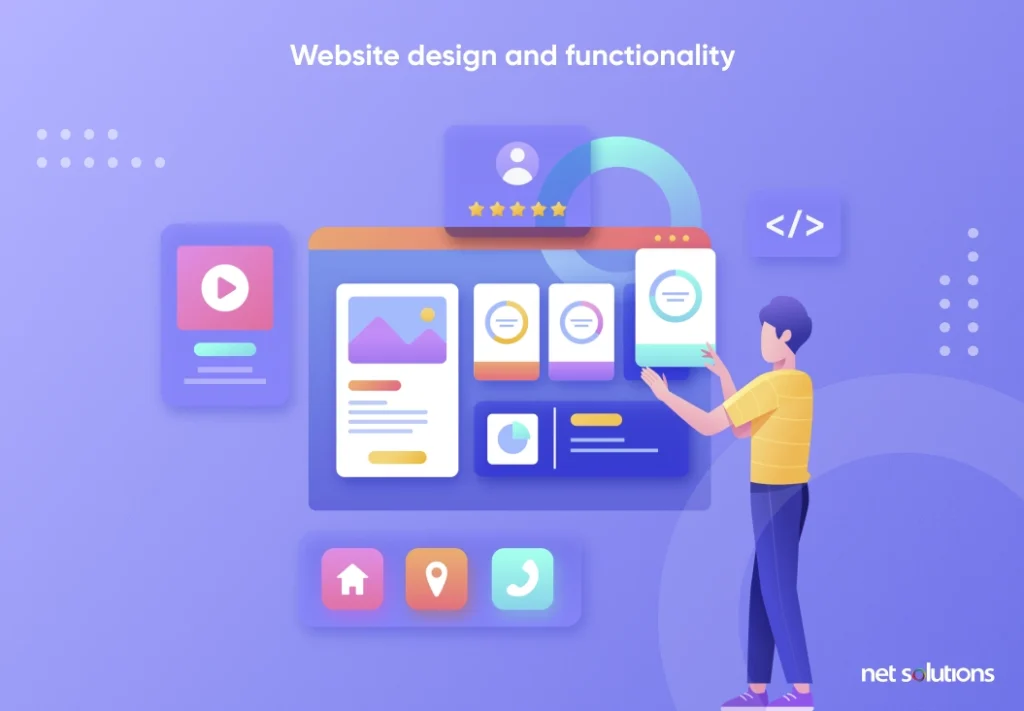
B2B vs. B2C websites:
Here’s a table highlighting the differences between B2B and B2C eCommerce websites.
|
|
|
|
|---|---|---|
| 1. Target Audience | Other businesses | End-users |
| 2. Decision-makers (and Decision-influencers) | Researchers, managers, sales reps, brokers | Individual end-users |
| 3. Purchase Quantity | Bulk orders | Small orders |
| 4. Pricing | Dynamic and negotiable (price drops as order size increases) | Consistent |
| 5. Customer Service Assistance | Throughout the stages of the customer journey | After-sales or pre-sales assistance. Usually one-time |
| 6. Product Supporting Content | Case studies, product videos, explainer videos, buying guides | High-resolution images, Product videos, features, discounts |
| 7. Call to Action (CTA) | Simple, straight-forward, and Business-centric (how the product will benefit the business on the whole) | Engaging and user-centric (how the product will benefit the individual) |
Frequently Asked Questions
1. Are there any specific regulations or compliance that B2B eCommerce websites need to follow?
B2B eCommerce websites may need to comply with regulations and standards based on their industry, such as PCI DSS and GDPR, for handling sensitive information.
2. How do B2B and B2C eCommerce websites handle bulk ordering and volume discounts?
B2B eCommerce websites typically have features to handle bulk ordering and volume discounts, including placing large orders, negotiating volume discounts, and setting up automated reordering processes. B2C eCommerce websites, on the other hand, may have different capabilities to handle large orders and volume discounts. They offer discounts and promotions to attract customers.
3. How do B2B eCommerce websites handle data privacy and security?
B2B eCommerce websites implement industry-standard website security measures such as encryption, firewalls, and secure servers. They have strict data access and management policies, regular security audits, and testing. B2B eCommerce websites also comply with data security & privacy regulations such as GDPR and HIPAA.
4. How does the purchasing process differ for B2B and B2C eCommerce websites?
B2B eCommerce websites require a login or account creation to access pricing and place orders. The purchasing process in B2B eCommerce may involve multiple decision-makers and a longer sales cycle. On the other hand, B2C eCommerce websites allow for anonymous browsing and purchasing. The purchasing process is simple and fast, often involving a single decision-maker and a shorter sales cycle.
SHARE THIS POST
Table of Contents
Related Resources
- eCommerce App Development Cost: Budgeting In-Depth Guide
- Top 10 eCommerce Challenges and Easy Ways to Overcome Them
- 3 Types of eCommerce Business Models That Work in 2024
- eCommerce for Business: Is eCommerce Applicable for All Business Types
- eCommerce Customer Journey Mapping - The Secret to Higher Conversion Rates
- What is Headless Commerce? The Ultimate Guide
- Top 15 eCommerce KPIs to Track the Performance of Your Online Business
- What is Adobe Commerce (Magento)? Everything You Need to Know in 2024
- Why Your Business Needs a Mobile eCommerce App
- Omnichannel Retail Strategy: A Comprehensive Guide
- Omnichannel vs Multichannel Retailing: The Complete Guide
- What is eCommerce Order Fulfilment? (And 6 Steps to Improve the Process)
- PCI Compliance: Everything You Need To Know
- The BEST Guide to eCommerce Personalization
- 12 Essential Factors for Choosing the Best eCommerce Platform
- The Ultimate Guide to Product Information Management (PIM) Systems for Ecommerce
- What is a Product Recommendation Engine (And How it Helps Boost Sales)
- eCommerce Replatforming: Challenges, Benefits, and Best Practices
- The Ultimate Guide to eCommerce Security
- Top 13 eCommerce Trends in 2024
- How Voice Search will Transform the Future of eCommerce
- What is Web Accessibility (And Why it Matters for Your eCommerce Business)

